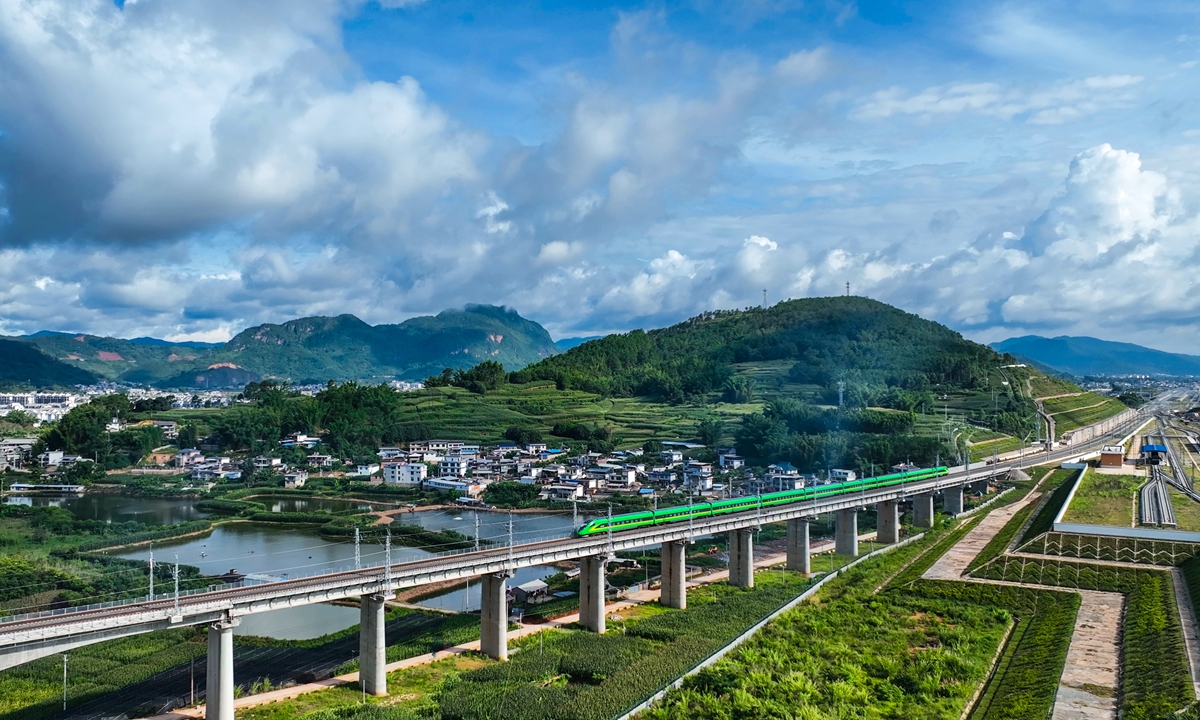
A train on the China-Laos Railway crosses a river in Pu’er, Southwest China's Yunnan Province, on July 17, 2021. Photo: VCG
How many times did you take the train in 2024?
In China, 4.08 billion passengers made trips via the country's railway system in 2024, showing a year-on-year growth of 10.8 percent. On the busiest day of 2024, the system transported 21.448 million passengers, as reported by the Xinhua News Agency, citing data revealed by the China State Railway Group Co, Ltd (China Railway) during a press conference on Thursday.
By the end of 2024, China's railway operating mileage reached 162,000 kilometers, of which 48,000 kilometers are high-speed railways, marking a record achievement, according to China Railway.
On December 29, 2024, China's cutting-edge rail technology once again amazed the world as the country unveiled the prototype of the world's fastest high-speed train, the CR450. The new model has reached test speeds as high as 450 kilometers per hour and has an operational speed of 400 kilometers per hour. Currently, the highest speed of the CR400 Fuxing bullet trains in service in China is 350 kilometers per hour, according to Xinhua.
These are the latest demonstration of China's marvelous achievements in the railway industry.
A white paper on the development of China's transport published by the State Council Information Office in 2016 revealed that the total railway length in China was only 21,800 kilometers back in 1949. But now the country boasts one of the busiest railway networks in the world, connecting bustling cities with remote villages.
Railways have served as not only a mode of transport, but also an engine for economic development and a witness to social change.
In cities, railways are making transport more convenient and regional coordination more efficient. Passengers had made over 27 million trips between Guangdong and Hong Kong via the Guangzhou-Shenzhen-Hong Kong high-speed railway in 2024, a yearly increase of 37 percent, Xinhua reported. In remote areas, railways provide local residents with access to the latest information, high-quality goods, and opportunities to pursue their dreams. In Southwest China's Xizang Autonomous Region, the Qinghai-Xizang Railway has been operating for 18 years. Over the past 18 years, 36.885 million trips had been made and 87.751 million tons of goods had been transported via the railway as of June 30, 2024.
The region's GDP increased from 29.05 billion yuan ($3.98 billion) in 2006 to 239.267 billion yuan in 2023, according to Xinhua.
Meanwhile, railways are bringing China and the world closer, injecting new impetus into the building of a community with a shared future for mankind.
As of Thursday, the China-Laos Railway has transported over 50 million tons of goods, with a daily dispatch of 18 cross-border cargo trains, a significant increase from just two when the railway first opened in 2021, the China Central Television reported.
At the press conference on Thursday, China Railway also announced that it will strive to complete 590 billion yuan of railway infrastructure investment and put 2,600 kilometers of new lines into operation in 2025. In 2025, the national railway system is expected to transport a total of 4.28 billion passengers, an increase of 4.9 percent year-on-year. By 2030, the national railway operating mileage is expected to reach 180,000
kilometers, of which about 60,000 kilometers will be high-speed railways.
As the Spring Festival approaches, China's rail system is gearing up once again to facilitate the journey of millions of people returning home to reunite with their families.
Global Times
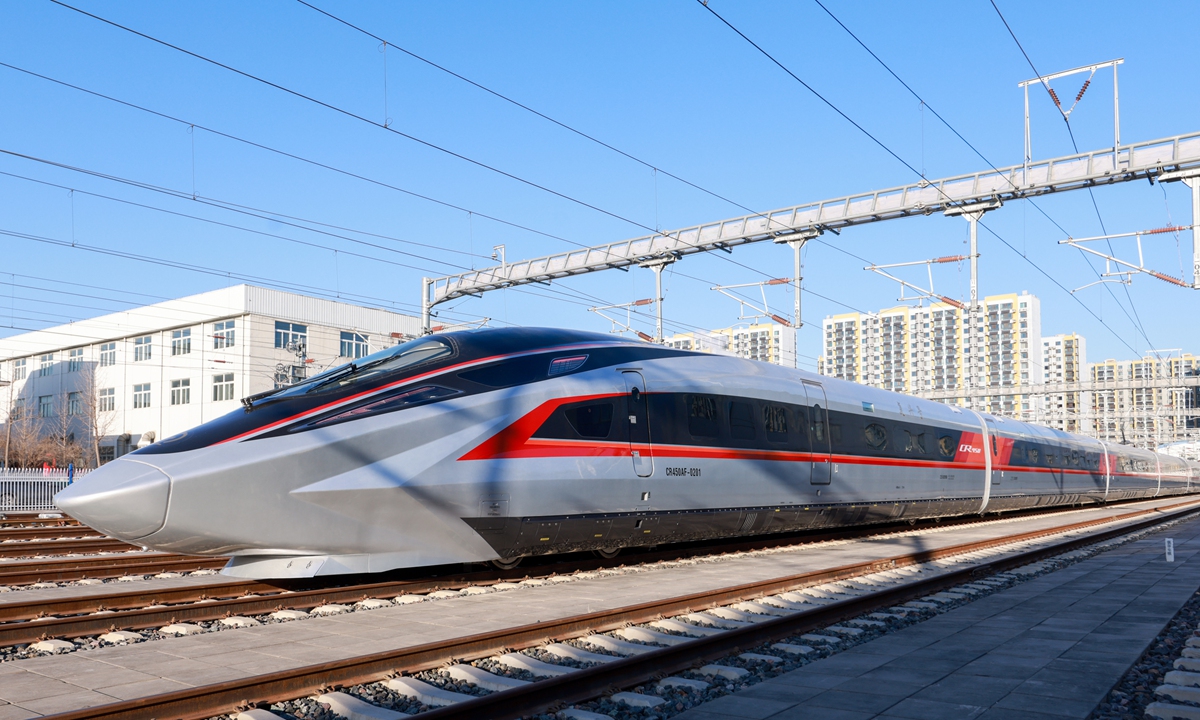
The prototype of China’s next-generation high-speed train, the CR450 Photo: VCG
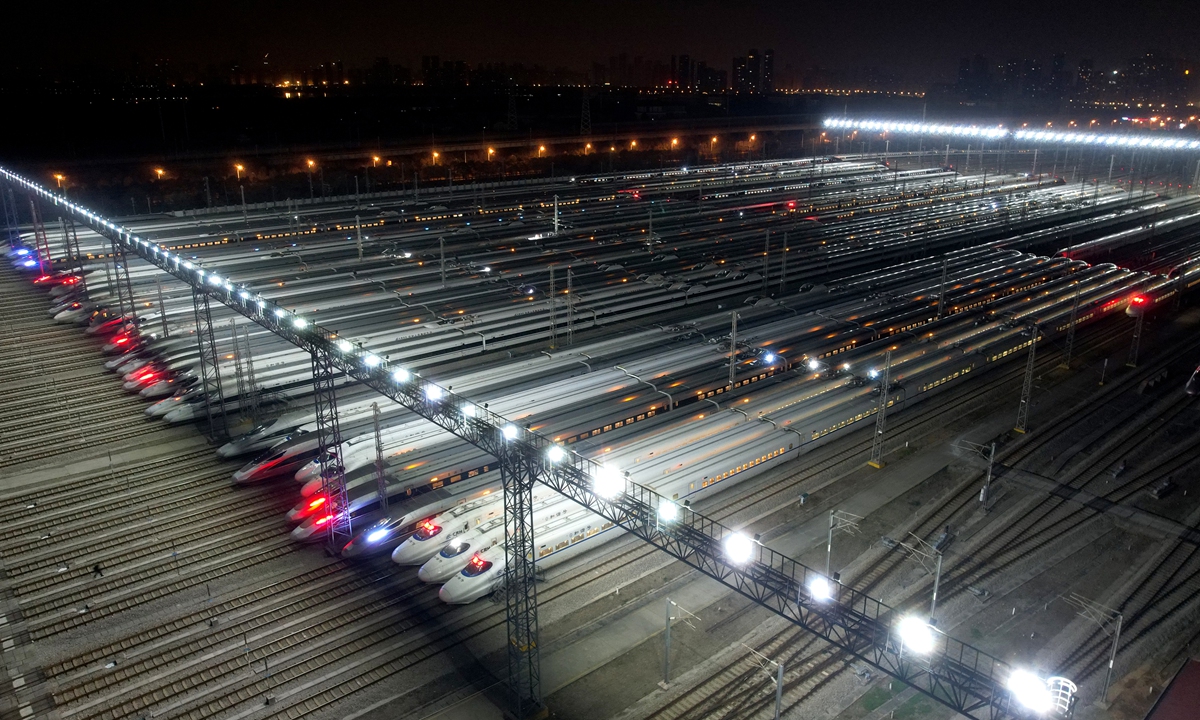
Bullet trains wait on storage tracks as part of preparations for the Spring Festival travel rush in Wuhan, Hubei Province, on January 25, 2024. Photo: VCG
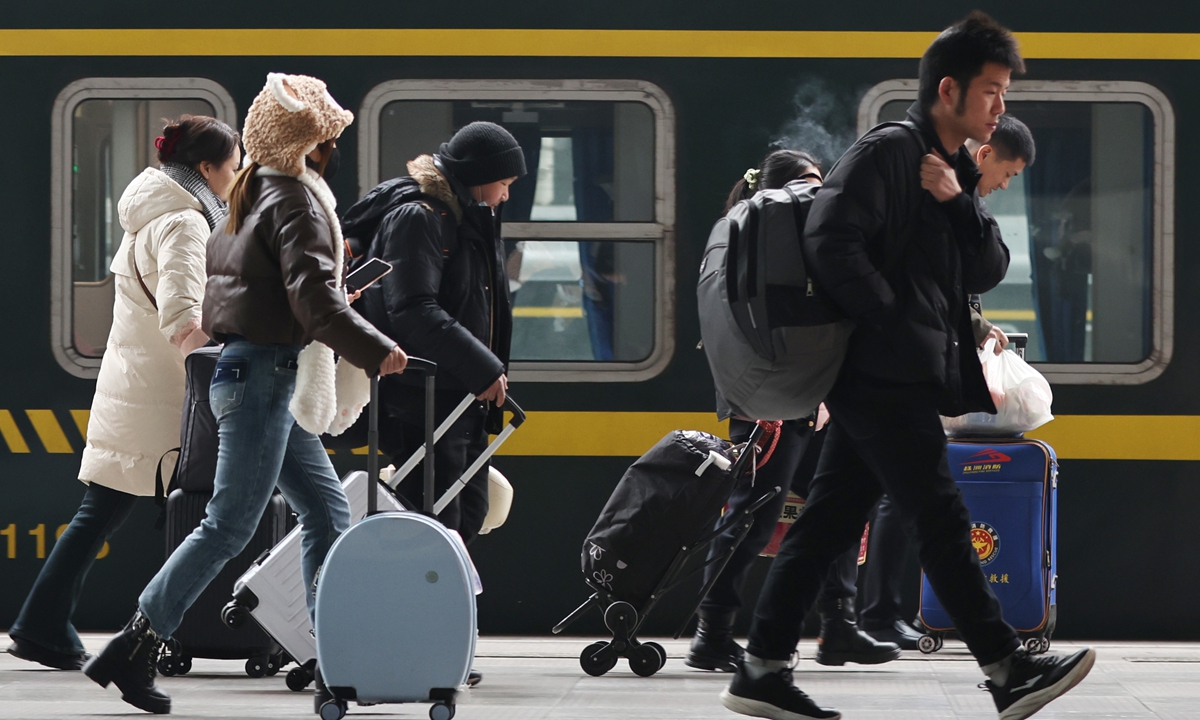
During the Spring Festival travel rush, passengers head to trains at the Nanjing Railway Station in Nanjing, Jiangsu Province, on February 6, 2024. Photo: VCG
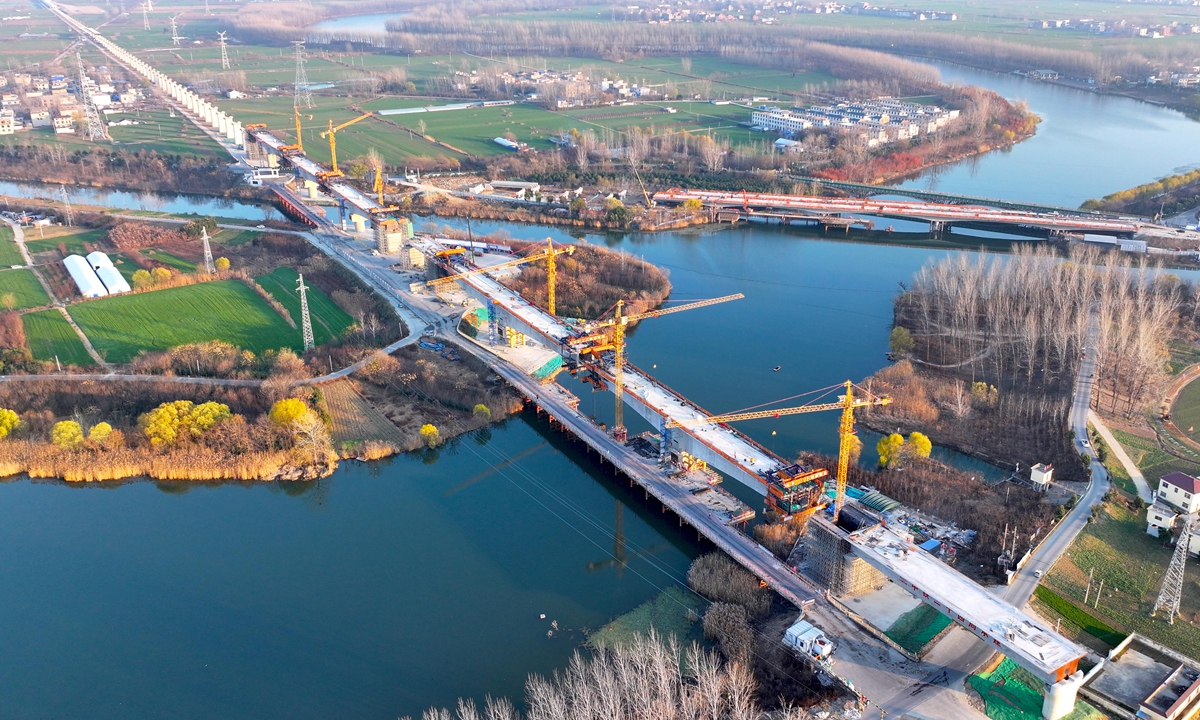
Construction of the Fuyang-Huaibei Railway is underway in Bozhou, East China’s Anhui Province, on December 16, 2024. Photo: VCG
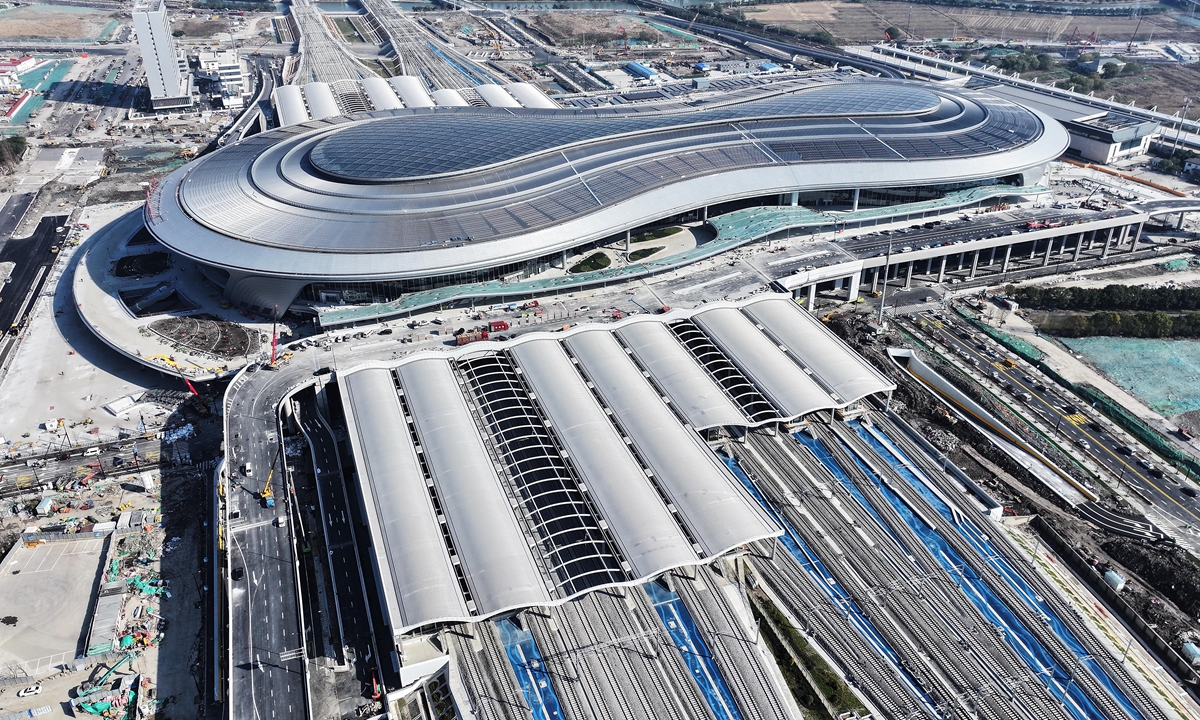
This picture shows the Shanghai Songjiang Station, which was put into use on December 26, 2024. Photo: VCG

Tracks of progress










